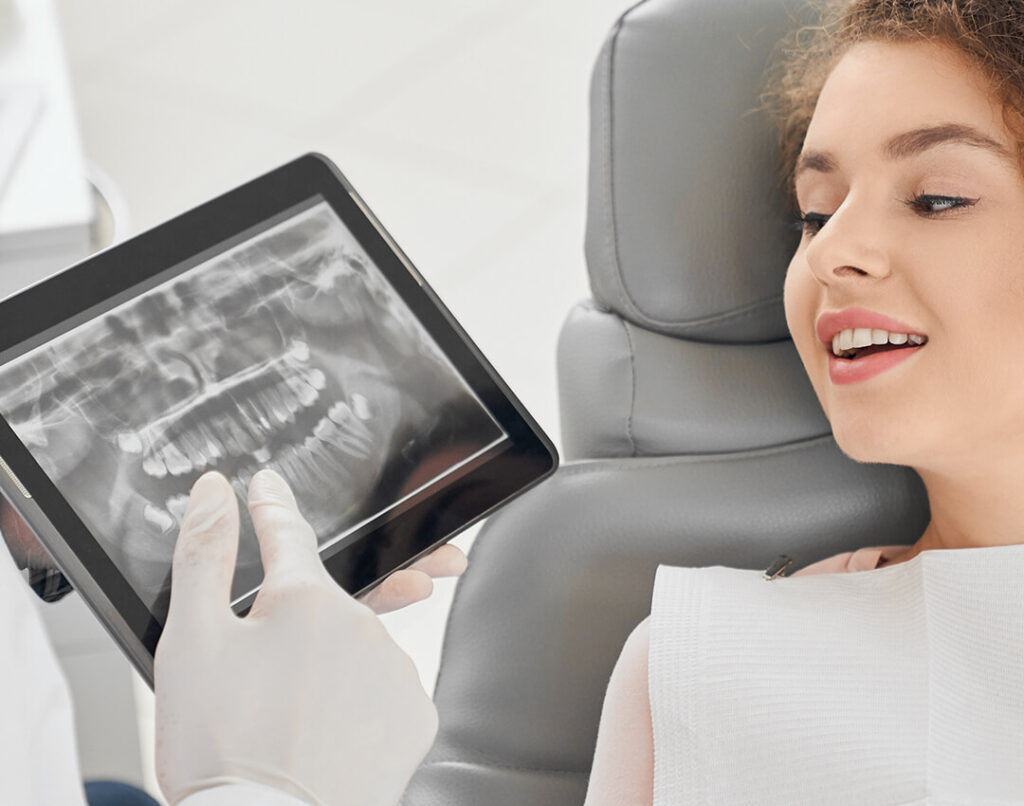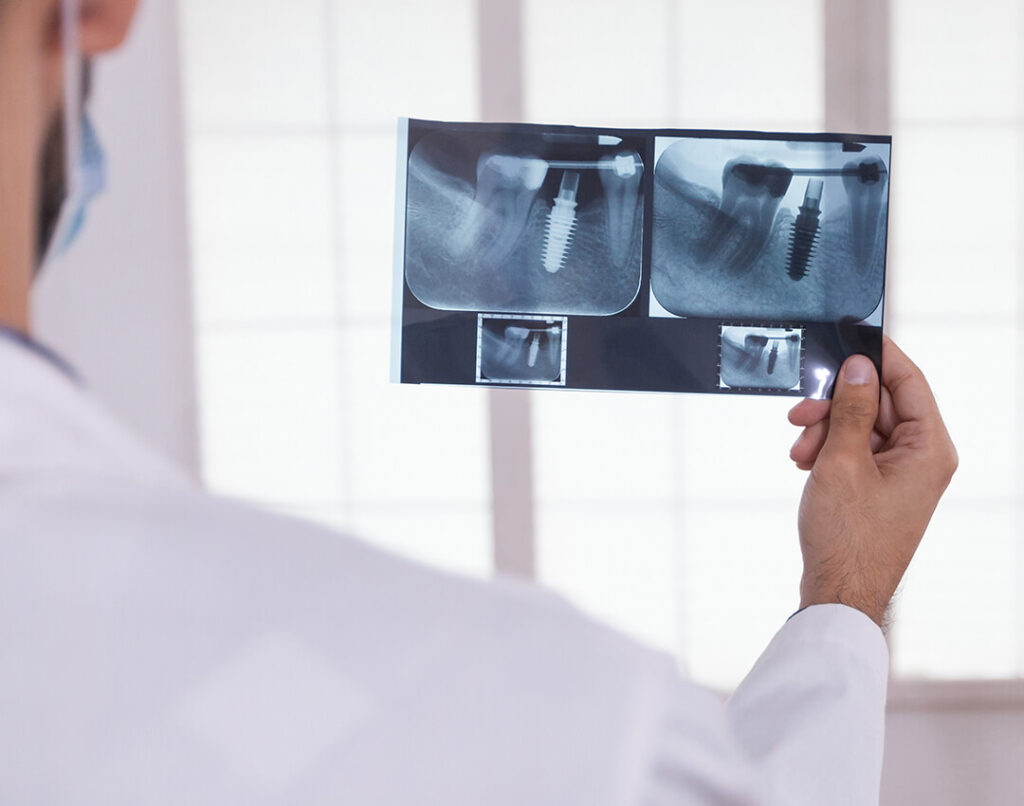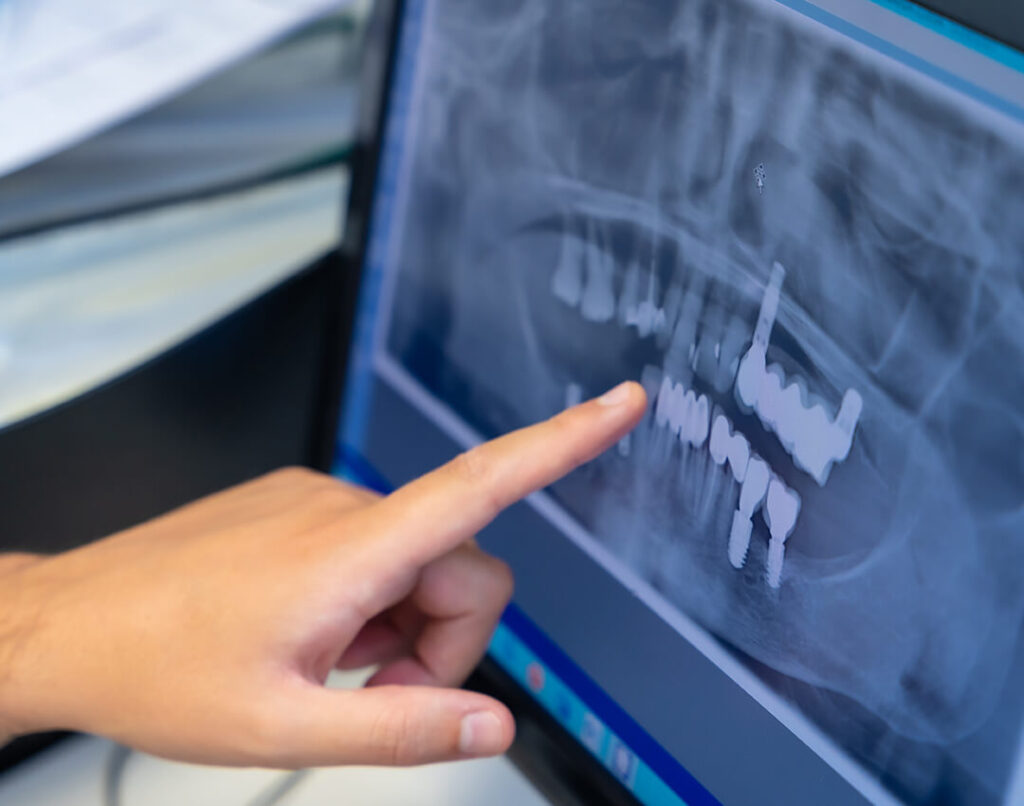- (718) 268 8228
- (718) 268 1281
- madisondentalny@gmail.com
- 112-03 Queens Boulevard, Suite 211, Forest Hills, NY 11375
Digital Dental X-rays
Forest Hill, Queens NY
REVOLUTIONIZING DENTAL DIAGNOSTICS WITH DIGITAL X-RAYS
Dental technology has taken remarkable strides in enhancing the patient experience and the accuracy of diagnosis and treatment. The days of painful and time-consuming dental procedures are behind us, thanks to the advancements in dental technology. One such innovation is digital radiography, a transformative replacement for traditional dental X-rays.
While traditional dental X-rays emit minimal radiation, some patients may still harbor concerns about safety. Additionally, the wait time for film development and environmental considerations have also raised issues. To address these concerns, dentists have embraced digital radiography, a high-tech solution that offers a safer and more efficient alternative to conventional dental X-rays.
THE DIGITAL RADIOGRAPHY PROCESS
The process of digital radiography shares some similarities with traditional dental X-rays that use film. In digital radiography, a sensor is placed inside the patient’s mouth to capture images of the teeth. However, here is where the differences become apparent. Unlike conventional X-rays, digital radiography employs an electronic sensor connected to a computer. Once the X-ray is taken, the image is instantly displayed on a computer screen for the dentist to review.


BENEFITS OF DIGITAL RADIOGRAPHY
Digital radiography offers several advantages over traditional film X-rays:
- Reduced Radiation Exposure: Digital X-rays significantly reduce radiation exposure, with up to 90 percent less radiation compared to film X-rays. This makes digital radiography an excellent choice for patients who require frequent X-rays or have concerns about radiation.
- Time Savings: Traditional dental X-rays require patients to wait while the film is developed. With digital radiography, the image is processed almost instantly and displayed on a computer screen, saving time during your dental appointment.
- Customized Viewing: Digital X-rays eliminate the limitations of traditional “one size fits all” images. Dentists can enlarge or magnify digital X-rays for a better view of tooth structures. Adjustments in brightness, contrast, and color further enhance the ability to detect small cavities. Additionally, digital images can be printed if a hard copy is needed.
- Effortless Sharing: Digital images can be easily emailed to dental specialists for immediate review. This eliminates the time and expense of copying and mailing dental records, streamlining the process of transferring patient information and obtaining second opinions.
- Advanced Diagnostics: Digital radiography is complemented by software programs like subtraction radiography. This technology allows dentists to compare current images with previous ones of the same tooth, helping detect even the slightest changes in tooth structure.
While digital radiography is gaining traction in the dental community, the investment in digital radiography equipment may not be universal among dental practices just yet. However, the benefits for both dentists and patients are undeniable.
Regardless of the type of X-rays chosen, dental X-rays are an essential component of regular dental visits. They play a crucial role in diagnosing issues that may not be visible to the naked eye. If you have concerns about radiation exposure, don’t hesitate to discuss your X-ray options with your dentist. Digital radiography is revolutionizing dental diagnostics, making procedures safer, more efficient, and more patient-friendly.

How to Find Digital Dental X-rays Near Forest Hills?
Madison Dental Art: Searching for state-of-the-art digital dental X-rays in Forest Hills, Queens?
You’ve come to the right place! Located at 112-03 Queens Boulevard, Suite 211, Forest Hills, NY 11375, Madison Dental Art is your trusted provider for precise and safe digital dental X-rays, ensuring accurate diagnoses for your dental health.
Trustindex verifies that the original source of the review is Google. The Service is excellent. No waiting to be seen. Appointments are on target. The Staff give them all anA++. Try Madison Dental you just might like them. The best!!!Trustindex verifies that the original source of the review is Google. Not only is DDS Chao wonderful and patience but so is the entire staff. It's always a pleasant experience.Trustindex verifies that the original source of the review is Google. I love my dentist. They are caring, patient however I was disappointed in the no communication given regarding my procedure and extras. Otherwise I'm sure they deserve another chance since I've been going for so many yearsTrustindex verifies that the original source of the review is Google. Waiting area is modern and immaculate. Staff is very friendly. Most importantly Dr Chao is wonderful. He is gentle, kind, positive and very competent. He put me at ease and efficiently and effectively did the necessary exam and cleaning. I was very pleased with my first visitTrustindex verifies that the original source of the review is Google. Emergency Swollen gums visit. The infection was relieved promptly. Excellent service & friendly staff.Trustindex verifies that the original source of the review is Google. Best dentist, clean and gentle. I wouldn't trust anyone else.Trustindex verifies that the original source of the review is Google. Dr. Zheng does great quality work. Good attention to patient needs. The facilities are clean and orderly.Trustindex verifies that the original source of the review is Google. I can’t say enough about Madison Dental Art. Dr.Chao is the best dentist I have gone to by far. He’s very patient and understanding when it comes to my fear of the dentist. He’s very gentle and never rushes a procedure. He tells me what he’s doing before doing anything. The front staff is very welcoming and friendly they make you feel like they know you forever. They also send you reminders about your up coming appointments. I wouldn’t go any place else!